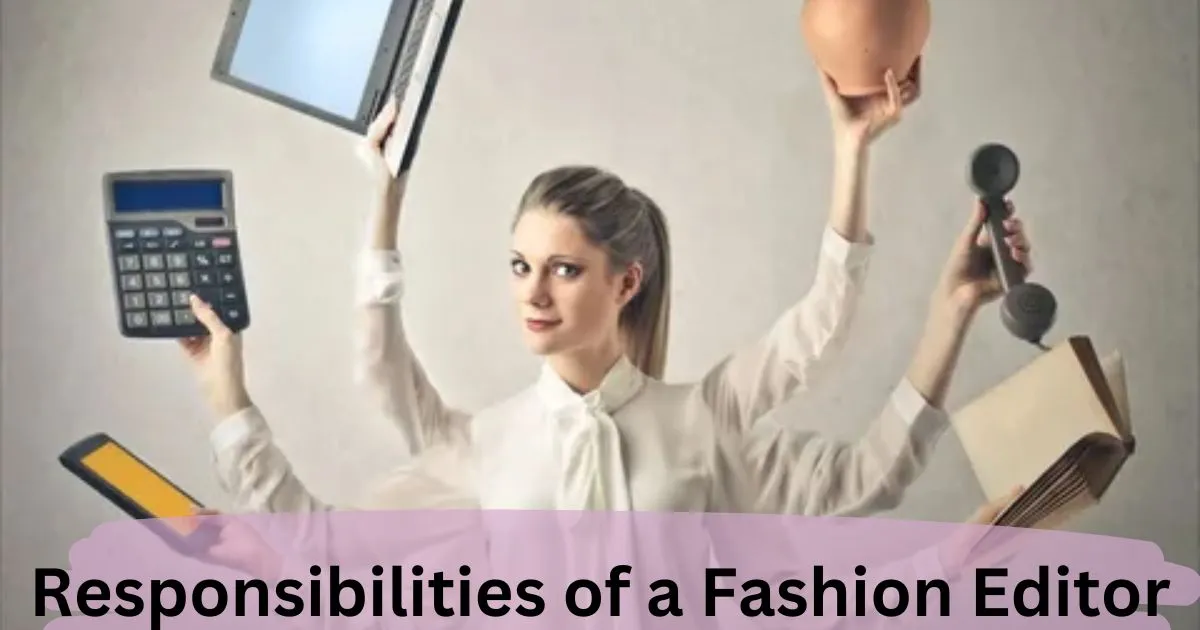A fashion editor oversees the fashion course of an book or emblem, selecting and styling clothes for editorial shoots, coordinating with photographers and designers, and staying modern with developments.
They curate style spreads that mirror the publication’s aesthetic and attraction to its target market.
Fashion editors curate traits, fashion shoots, and define editorial aesthetics.
A fashion editor isn’t only a stylist—they are the fashion whisperers who shape what is hot and what’s now not.
From picking the right pieces for an image shoot to setting the tone for the following massive season, those fashion mavens combine creativity with eager perception into what makes fashion sizzle.
Fashion editor

A fashion editor performs a pivotal role within the dynamic and ever-evolving international of style media.
They are responsible for curating, growing, and overseeing the fashion content material that appears in magazines, web sites, and other media platforms.
Their affect extends throughout various aspects of the fashion enterprise, from placing tendencies to deciphering fashion designer collections for the wider audience.
Key Responsibilities of a Fashion Editor
The key responsibilities of a fashion editor are given below:
Content Curation and Creation:
Fashion editors are ordinarily accountable for determining which fashion portions, developments, and patterns are featured in their guide or platform.
They curate content material that aligns with the booklet’s aesthetic and target market. This involves deciding on clothes, accessories, and beauty products for photo shoots and editorials.
Trend Spotting and Forecasting:
Fashion editors want to have a keen sense of contemporary and emerging traits.
They attend style suggestions, industry occasions, and keep an eye fixed on road style to perceive traits that are gaining momentum.
By forecasting traits, they manual their e-book in covering what is applicable and influential within the style global.
They conceptualize photograph shoots, pick places, and oversee the styling method.
Collaboration is prime to making sure that the editorial content material meets excessive innovative standards and resonates with the target market.
Writing and Editing:
Beyond visuals, fashion editors regularly write or edit articles, interviews, and critiques associated with fashion.
They may make editorial portions that provide insights into traits, designer profiles, or style enterprise news.
Strong writing skills are vital for efficiently communicating fashion concepts and traits to readers.
Market Research and Analysis:
To stay beforehand inside the fast-paced fashion industry, style editors behave through market research.
This entails studying income records, customer conduct, and competitor publications.
Understanding marketplace dynamics enables editors to make knowledgeable choices about content introduction and fashion insurance.
Managing Editorial Calendars and Deadlines:
Fashion editors oversee editorial calendars to make sure well timed publication of content.
They manage closing dates for image shoots, article submissions, and final proofs.
This organizational skill is essential for retaining the guide’s production schedule and meeting target market expectancies.
Fashion Show Coverage:
Attending style indicates all through fashion weeks is a full-size part of a fashion editor’s process.
They review collections, become aware of key developments, and document at the cutting-edge runway presentations.
This first hand revel in allows editors to provide authoritative insights into the route of style every season.
Brand and Designer Relationships:
Fashion editors domesticate relationships with fashion brands and architects.
They attend showroom appointments, preview collections, and negotiate collaborations for editorial capabilities.
These relationships are essential for gaining extraordinary access to new collections and insider records.

Skills Required for Success
Successful fashion editors possess a unique mixture of creativity, enterprise knowledge, and organizational acumen.
Key abilities consist of:
Creative Vision:
Ability to conceptualize and execute visually compelling fashion stories.
Fashion Industry Knowledge:
Deep expertise of designers, brands, and historical style references.
Communication Skills:
Clear and persuasive writing competencies, along with effective collaboration.
Trend Awareness:
Keen eye for rising tendencies and cultural influences.
Organizational Skills:
Ability to manipulate more than one task and cut-off dates.
Digital Savvy:
Proficiency in virtual media platforms and trends in on-line publishing.
Networking Abilities:
Strong connections in the style enterprise for sourcing content material and collaborations.
Evolution of the Role inside the Digital Age
The function of a fashion editor has developed extensively with the arrival of virtual media and social systems.
While conventional print guides remain influential, virtual systems have accelerated the reach and immediacy of style content material.
Fashion editors now navigate a panorama where traits can emerge and spread swiftly thru social media, influencing patron conduct in real-time.
Digital Content Creation:
Fashion editors now create content material tailor-made for websites, social media, and cell systems.
They produce digital-first content along with videos, podcasts, and interactive features to engage a worldwide target audience.
Influence of Social Media:
Social media systems like Instagram and TikTok have ended up being critical tools for style editors to sell content and have interaction with fans.
Editors leverage their private brands to expand their e-book’s reach and have an impact on.
Instantaneous Trend Reporting:
Fashion editors use digital systems to document on style indications and traits as they show up.
Live streaming of runway suggests and immediate social media updates have transformed how fashion information is disseminated.
Data-Driven Insights:
Digital analytics offer fashion editors with treasured insights into target audience choices and content material overall performance. Editors can tailor content material strategies based on information to optimize engagement and reach.
Globalization of Fashion:
Digital platforms have facilitated the globalization of favor, allowing editors to exhibit various views and tendencies from around the sector.
This interconnectedness has enriched fashion discourse and broadened cultural representation.
FAQs
1.What does a fashion editor do?
Fashion editors curate and create style content for magazines and digital structures.
2.How do fashion editors impact trends?
They spot emerging styles and showcase them through editorials and fashion reviews.
3.What skills are critical for a fashion editor?
Creativity, industry expertise, writing capability, and virtual media talent.
Conclusion
A fashion editor occupies a central position at the intersection of creativity, trade, and cultural impact in the fashion industry.
Their duties encompass curating compelling content, forecasting developments, nurturing enterprise relationships, and leveraging digital systems to engage a global audience.
With a mix of artistic imaginative and prescient, and societal perceptions.
You can also read this post:
What does a fashion editor do?

